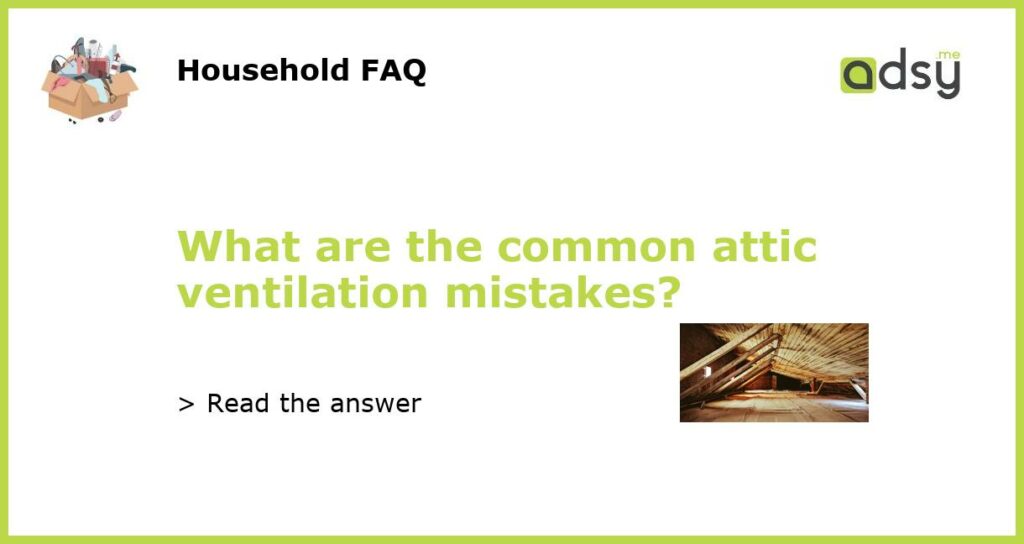Not installing enough vents
One common mistake that homeowners make when it comes to attic ventilation is not installing enough vents. Proper ventilation is essential for the health and longevity of your home, as it helps to remove excess heat, moisture, and pollutants from the attic space. Without proper ventilation, the attic can become hot and humid, leading to a range of issues such as mold growth, wood rot, and decreased energy efficiency. To ensure adequate ventilation, it is important to follow the recommended ventilation guidelines for your specific roof type and attic size. This may involve installing soffit vents, ridge vents, gable vents, or a combination of these.
Blocking vents with insulation
Another common mistake is blocking attic vents with insulation. While it is important to have proper insulation in the attic to prevent heat transfer and improve energy efficiency, it is equally important to ensure that the insulation does not obstruct the airflow from the vents. Blocking vents with insulation can prevent the free flow of air, leading to stagnant air in the attic and potential moisture issues. When installing insulation, it is crucial to leave a clear path for air to enter through the soffit vents and exit through the ridge vents or other exhaust vents. This can be achieved by using baffles or rafter vents to maintain a gap between the insulation and the roof sheathing.
Venting bathroom or kitchen exhaust fans into the attic
Another ventilation mistake that homeowners often make is venting bathroom or kitchen exhaust fans directly into the attic space. Exhaust fans in these areas are designed to remove excess moisture and odors from the air, but if they are vented into the attic instead of being properly ducted to the exterior, they can introduce moisture into the attic and contribute to mold growth and structural damage. It is important to ensure that all bathroom and kitchen exhaust fans are vented directly to the outside of the home, either through the roof or the side wall, to prevent moisture from being trapped in the attic.
Neglecting to maintain or clean the vents
A common mistake many homeowners make is neglecting to maintain or clean their attic vents. Over time, vents can become clogged with debris such as leaves, dust, or animal nests, which can impede the airflow and reduce the effectiveness of the ventilation system. Regularly inspecting and cleaning the vents can help to prevent clogs and ensure that air can freely enter and exit the attic space. It is recommended to clean the vents at least once a year, or more frequently if you notice any blockages or reduced airflow.
Not considering the climate and roof type
Lastly, one common mistake homeowners make is not considering the climate and roof type when installing attic ventilation. The ideal ventilation system for a home can vary depending on factors such as the climate, roof pitch, and roof material. For example, homes in hot and humid climates may require more ventilation to remove excess heat and moisture, while homes in colder climates may require insulation to prevent heat loss. Additionally, different types of roofs may have different ventilation requirements. It is important to consult with a qualified professional or follow the manufacturer’s recommendations to ensure that your attic ventilation system is suitable for your specific climate and roof type.

